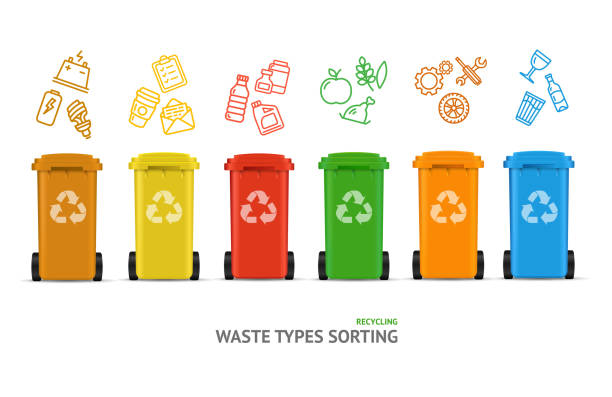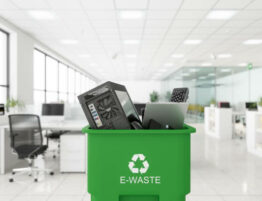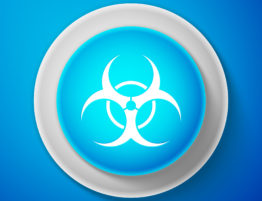
Waste management has grown in importance in today’s globe. It is impossible to overestimate the effects of trash on the environment and public health, from overflowing landfills to pollution in our oceans. Understanding the many waste types and their unique properties is crucial to solving this problem.
Types of Waste
This article examines the four main categories of garbage and considers how they affect society and the environment.
- Solid Waste
Solid trash is the most common kind of garbage for many of us. It includes various things, such as building debris, industrial leftovers, domestic trash, and agricultural Waste. Hazardous and non-hazardous Waste are the two primary categories into which solid Waste can be further divided.
Commonplace materials include food scraps, paper, plastic, glass, and metals in non-hazardous solid Waste. Even though there might not be an immediate risk to the environment or public health from these items, incorrect disposal can result in resource depletion, pollution, and habitat damage.
However, materials included in hazardous solid Waste can potentially be toxic or damaging to living things. This category contains chemicals, solvents, heavy metals, and specific electronics. Hazardous waste handling and disposal done incorrectly can contaminate land and water and pose major health dangers to people and wildlife.
- Liquid Waste
Any discarded liquid material, such as wastewater from commercial, industrial, or residential operations, is referred to as liquid Waste. Sewage, industrial effluents, chemical runoff, and tainted water from several sources are all included. Point source and nonpoint source pollution are the two primary categories into which liquid Waste can be further divided.
Contaminants that enter water bodies through identifiable sources, like sewage treatment facilities or industrial discharge pipelines, are called point sources of pollution. These contaminants can destroy aquatic life, impair ecosystems, and lower water quality. On the other side, diffuse sources such as air deposition, urban stormwater runoff, and agricultural runoff are the sources of nonpoint source pollution. Nonpoint source pollution may have major cumulative effects on aquatic environments and water supplies despite being less obvious.
Liquid waste management usually entails wastewater treatment, pollution control strategies, and regulatory oversight to reduce environmental contamination and safeguard public health.
- Gaseous Waste
Emissions of gasses and vapors into the environment, mostly from energy production, transportation, and industrial activities, are called gaseous Waste. Particulate matter, sulfur dioxide (SO2), nitrogen oxides (NOx), carbon dioxide (CO2), and volatile organic compounds (VOCs) are examples of common gaseous pollutants.
The effects of these pollutants on human health, climate change, and air quality can be profound. For instance, carbon dioxide is significant in climate change and global warming, but nitrogen oxides and sulfur dioxide can cause respiratory illnesses and acid rain. Precursors to ground-level ozone generation are volatile organic chemicals that can worsen respiratory conditions and harm plants.
To reduce overall emissions, air pollution control technologies, emissions laws, and a shift to cleaner energy sources are often used in gaseous waste mitigation efforts.
- Hazardous Waste
Materials that present significant environmental and human health dangers are classified as hazardous Waste. This covers combustible, reactive, contagious, toxic, or corrosive materials. Radioactive materials, certain industrial chemicals, insecticides, and medical Waste are a few examples of hazardous Waste.
Hazardous trash must be managed properly to avoid mishaps, contamination, and harmful health impacts. This frequently entails strict laws, specific handling protocols, and safe disposal techniques, including chemical treatment, burning, or secure landfilling.
Like types of waste, you may also like to read about the Difference b/w Medical Waste and Biomedical Waste.
Waste Hierarchy
Aside from these four categories of garbage, it’s critical to understand the waste hierarchy, which ranks waste management techniques according to how they affect the environment. The following strategies usually make up the waste hierarchy, listed in order of preference:
- Prevention
We reduce waste production using resource efficiency techniques, consumption patterns, and product design.
- Minimization
Reducing the amount of Waste produced by activities for composting, recycling, and reuse.
- Treatment
I am applying processes like incineration or biological treatment to waste to lessen its volume, toxicity, or environmental impact.
- Disposal
The safe disposal of leftover garbage that is not reducible, avoided, or treated usually involves secure containment or landfilling.
We can reduce the environmental impact of our garbage and create a more sustainable future for future generations by embracing a holistic approach to waste management and implementing the waste hierarchy’s principles.
Conclusion
An interdisciplinary approach that incorporates public awareness, community engagement, legal frameworks, and technology innovation is necessary to address the difficulties related to waste management. Reducing Waste and increasing resource efficiency requires sustainable techniques like resource recovery, waste reduction, and circular economy concepts. Governments, businesses, academic institutions, and civil society organizations must collaborate to develop efficient waste management plans and realize the common objective of a healthier, cleaner environment. We may take steps toward a more resilient and sustainable future by identifying the many forms of Waste and putting comprehensive solutions into practice.




